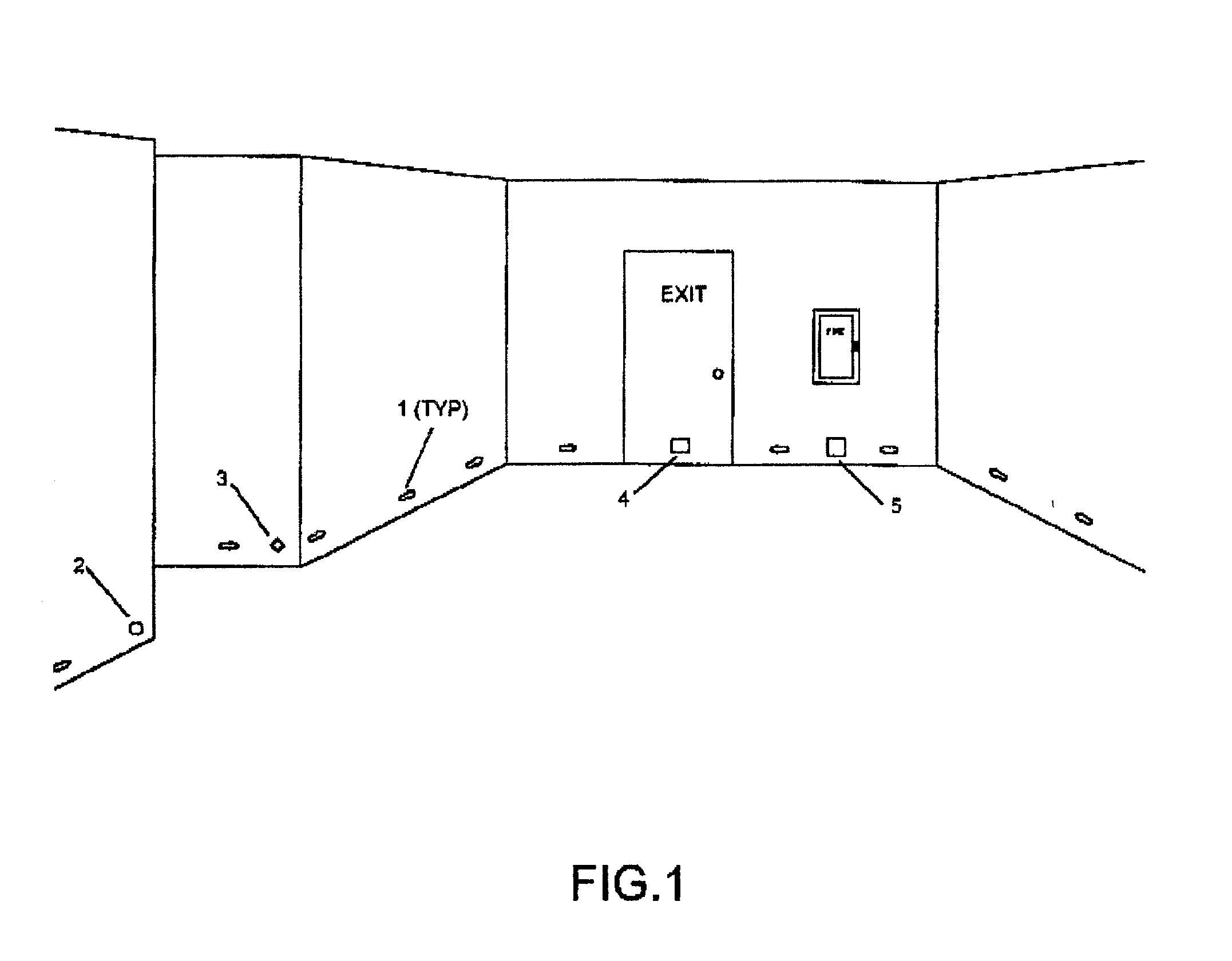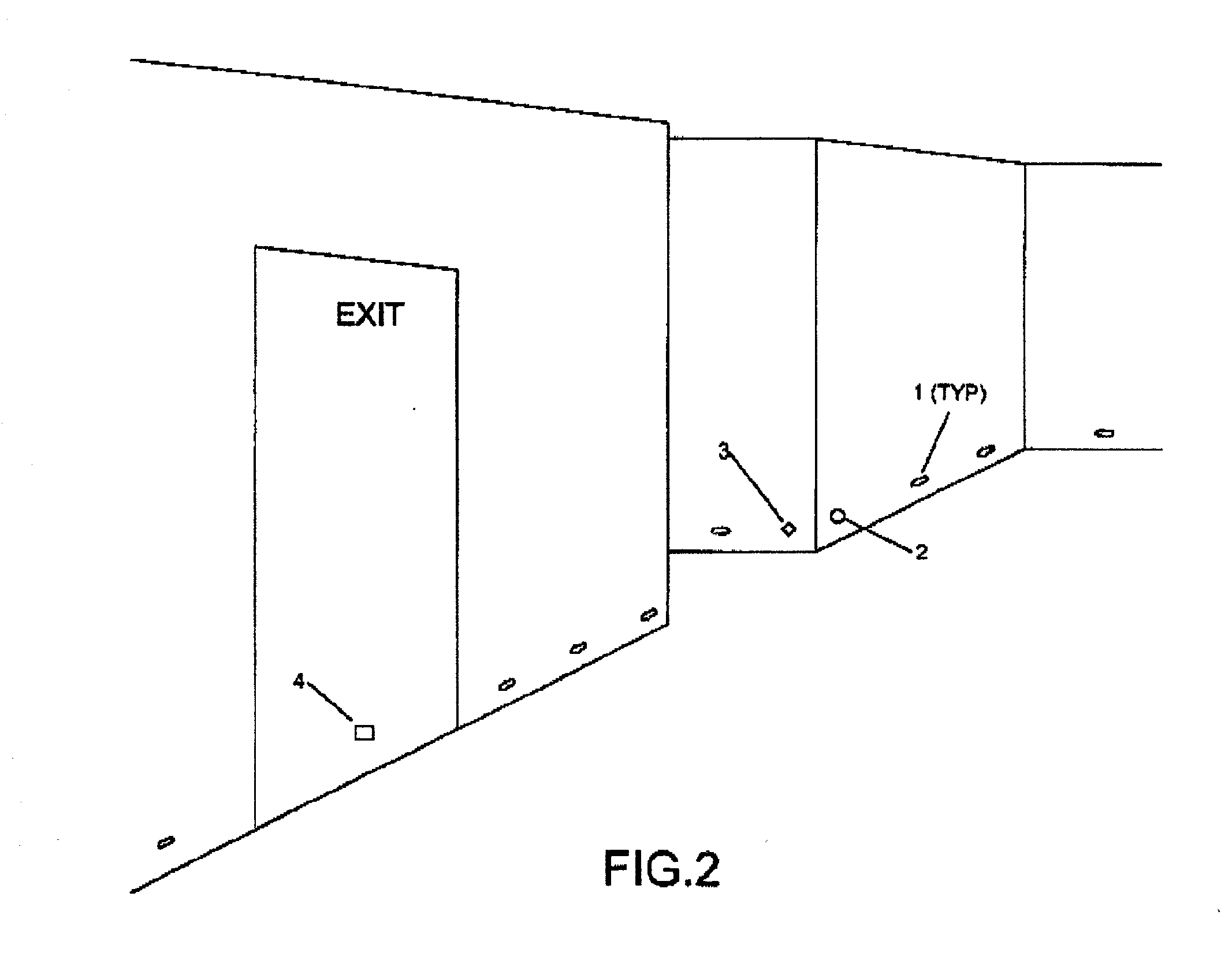Emergency visual and tactile exits system
a visual and tactile technology, applied in the field of emergency visual and tactile exit systems, can solve the problems of inability to easily see the emergency exit signs that are now commonly used, the exit signs may lose power or be obscured by thick smoke, and the signs may not be easily visible to peopl
- Summary
- Abstract
- Description
- Claims
- Application Information
AI Technical Summary
Problems solved by technology
Method used
Image
Examples
Embodiment Construction
[0019] The invention consists of a plurality of signs placed in strategic locations throughout a building. FIGS. 1, 2 and 3 show the preferred embodiment of the emergency exit system installed in three different room arrangements, each having a connecting or cross corridor. The physical components of the system consist of five different sign types, each providing a different message to a person evacuating a building. As shown in FIGS. 1, 2 and 3, all of these signs are positioned on the wall close to the floor where they can easily be read or felt by a person evacuating the room in a prone position.
[0020] Looking at FIG. 1, arrow signs 1 are positioned strategically along the walls to guide a person in the proper direction. A detailed plan view of an arrow sign 1 is shown in FIG. 4. It is generally arrow-shaped and is pointed in the direction of the escape route to the nearest exit door. When a person encounters an arrow sign 1 while traveling along the wall, he or she can immediate...
PUM
 Login to View More
Login to View More Abstract
Description
Claims
Application Information
 Login to View More
Login to View More - R&D
- Intellectual Property
- Life Sciences
- Materials
- Tech Scout
- Unparalleled Data Quality
- Higher Quality Content
- 60% Fewer Hallucinations
Browse by: Latest US Patents, China's latest patents, Technical Efficacy Thesaurus, Application Domain, Technology Topic, Popular Technical Reports.
© 2025 PatSnap. All rights reserved.Legal|Privacy policy|Modern Slavery Act Transparency Statement|Sitemap|About US| Contact US: help@patsnap.com



